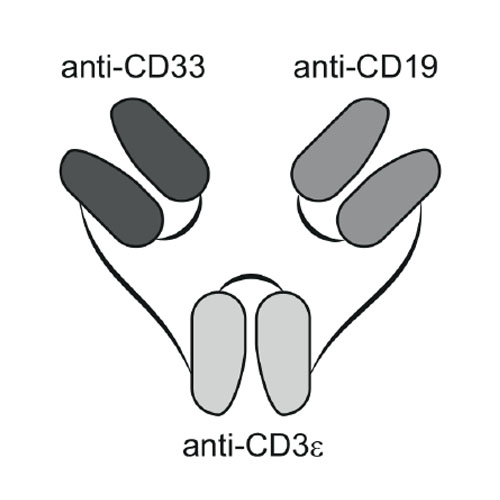Dual-targeting triplebody 33-3-19 mediates selective lysis of biphenotypic CD19+ CD33+ leukemia cells
10-Mar-2016
Oncotarget, Vol. 7, No. 16, DOI: 10.18632/oncotarget.8022
Oncotarget, online article
Simultaneous targeting of multiple tumor-associated antigens (TAAs) in cancer immunotherapy is presumed to enhance tumor cell selectivity and to reduce immune escape.
The combination of B lymphoid marker CD19 and myeloid marker CD33 is exclusively present on biphenotypic B/myeloid leukemia cells. Triplebody 33-3-19 binds specifically to both of these TAAs and activates T cells as immune effectors. Thereby it induces specific lysis of established myeloid (MOLM13, THP-1) and B-lymphoid cell lines (BV173, SEM, Raji, ARH77) as well as of primary patient cells. EC50 values range from 3 pM to 2.4 nM. In accordance with our hypothesis, 33-3-19 is able to induce preferential lysis of double- rather than single-positive leukemia cells in a target cell mixture: CD19/CD33 double-positive BV173 cells were eliminated to a significantly greater extent than CD19 single-positive SEM cells (36.6% vs. 20.9% in 3 hours, p = 0.0048) in the presence of both cell lines. In contrast, equivalent elimination efficiencies were observed for both cell lines, when control triplebody 19-3-19 or a mixture of the bispecific single chain variable fragments 19-3 and 33-3 were used. This result highlights the potential of dual-targeting agents for efficient and selective immune-intervention in leukemia patients.











